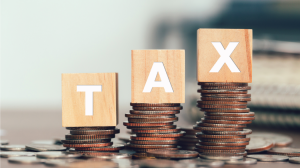 The goods and services tax (GST) on restaurant bills could be confusing for many customers. At times restaurants are also accused of generating fake GST bills even if they do not come under the purview of the GST Act, or collecting the tax without a valid GST number. However, the Press Information Bureau has shared an illustration on the GST levied on restaurant bills, which may clear all your doubts.
The goods and services tax (GST) on restaurant bills could be confusing for many customers. At times restaurants are also accused of generating fake GST bills even if they do not come under the purview of the GST Act, or collecting the tax without a valid GST number. However, the Press Information Bureau has shared an illustration on the GST levied on restaurant bills, which may clear all your doubts.
In the latest edition of New India Samachar, the government’s bi-weekly online news magazine, it has been claimed that after the implementation of GST, customers can save at least Rs 150 on taxes on a total bill amount of Rs 1,000.
Comparing a bill of Rs 1,000 with that of the pre-GST era, the government said, “One nation, one tax i.e. GST has made having food in the restaurant cheaper.”
In the comparison chart, it could be seen that on the food bill of Rs 1,000, total taxes including VAT used to be Rs 303.5. The tax components included 10 percent service charge, 6.5 percent service tax, 0.2 percent Krishi Kalyan cess (KKC), 0.2 percent Swachh Bharat cess and 14.5 percent value added tax. However, post-GST, the amount has been reduced to Rs 150, including 10 percent service charge and 5 percent GST, on the same bill amount.
Five percent GST is applicable on the total bill amount in air-conditioned and non-air-conditioned restaurants, whereas 18 percent GST is levied on the food services if the restaurant is located on the premises of a club or guest house.
A GST of 18 percent is also levied on food in restaurants in hotels, where room tariff is more than Rs 7,500.
When GST was rolled out in 2017, 12 percent and 18 percent rates were being levied in non-AC and air-conditioned restaurants, respectively.
Source: CNBC TV 18
https://www.cnbctv18.com/finance/your-restaurant-bill-is-less-in-gst-regime–govt-explains-with-figures-16256661.htm


